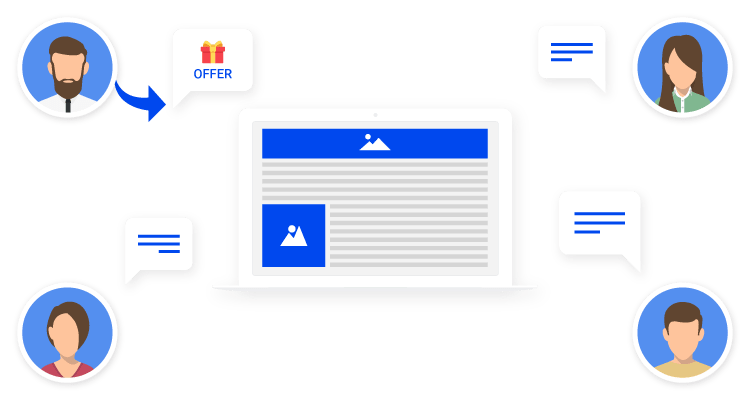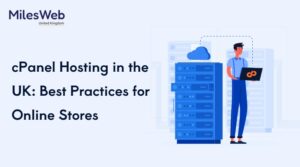Create Your Own Go To Market Strategy in 2023
A go to market strategy is a step-by-step strategy designed to launch a product to market successfully. A solid GTM strategy identifies a target audience, involves a marketing plan, and draws a sales strategy. Although there will be a different GTM strategy for each product and market, it will let you identify a market problem and position the product as a solution.
Let’s have a look at four major components of go to market strategy.
4 Components of a GTM Strategy are :
- Product-market fit: What problem(s) does your product resolve?
- Target audience: Who is encountering the problem that your product solves? How much are they ready to pay for a solution? What are the pain points and frustrations that you can alleviate?
- Competition and demand: Who already. What you’re launching? Is there a demand for the product, or is the market oversaturated?
- Distribution: Through what mechanisms will you sell the product or service? A website, an app, or a third-party distributor?
Strategies to Develop a Go to Market Strategy
1. Recognizing the buying center and personas.
It is the first thing you need to figure out while preparing your product for the market is to consider your customer.
On average, there are 6.8 decision-makers for each sale, which have a say in whether a product is bought, and these people make up what is called the “buying center.”
There are about seven roles that are as follows (though it’s important to note some job titles might occupy more than one role):
- Initiator: Originates the buying process or shows initial interest
- User: Uses your product regularly
- Influencer: Persuades others that the product is needed
- Decision maker: Gives final approval for the purchase
- Buyer: Owns the budget
- Approver: Final approver who drives the initiative on a larger scale (typically someone in the C-suite)
- Gatekeeper: Blocker in getting a product executed or approved
These roles vary on the basis of the product, industry, and vertical you’re selling to. Get your team together and brainstorm the different job titles that your solution could impact.
Do research for every role to get a general sense of what they do, their goals, and their pain points. It’s important to learn who these people are, what drives them, and their obstacles, as they will be the ones to put your product on the map.
2. Create a value matrix to help identify messaging.
A value matrix categorizes every buying center persona, their business problems, and how your product helps solve those problems.
The value matrix will also incorporate a relevant marketing message tying the problem and solution together.
Design a chart with every persona in one column. Below every persona, list the pain points they encounter every day. If your product can resolve or ease any of these problems, combine them in a row below.
Finally, the message needs to carry the pain point and value in a significant way. The best way to accomplish this is to agitate the pain point. People will take a painkiller to cure a headache but are much less likely to take a regular vitamin to limit the pain in the first place. The value your product brings should resolve the pain, not act as a vitamin.
3. Test your messaging.
Once your purpose matrix is in place, it’s time to test your messaging. Start promoting on marketing platforms using the messages you’ve just built for various audience members.
You’ll have three variables to test: how you advertise, your target audience, and the message you share.
While deciding where to test, your audience’s first view is, possibly paid digital ad channels might be LinkedIn, Google Ads, Facebook, and Twitter. Test the different channels and continue advertising on those high dispensing conversions. And stop investing in channels where you observe low conversions.
4. Optimize your ads based on your test results before executing them on a broad scale.
Next, optimize your audience. Some ad platforms have highly targeted audience settings for advertisers. For instance, LinkedIn offers job title options, job function, company size, and geographic location. Test different options to see who is more likely to click or convert.
5. Analyze and shorten the sales cycle.
Finally, track how long-drawn your sales cycle is. This is the amount of time it takes for an event to enter the sales funnel and change to a closed/won deal. The aim is to shorten the conversion between every stage. This can be done by knowing common objections (and iterating ways to remove them before they happen), doing ongoing lead nurturing, and brainstorming ways to find the best-fit customers.
6. Build brand awareness and demand generation with inbound and/or outbound methods.

Now you need to load your pipeline by snagging the attention of your target audience. This happens through demand generation, which can happen with inbound and/or outbound strategies.
With inbound, prospects recognize your brand through marketing efforts and reach out to you or show signs of interest organically. Some examples of organic inbound traffic channels could be social media, content, or paid ads leading to a landing page.
Outbound demand generation is when a salesperson contacts a lead through cold outreach tactics. They might do this by reaching out to a contact list, sending warm emails, phoning leads, or gathering leads at industry conferences.
Once interest has been created through these methods, sales conversations begin, and the leads are led to more educational content and then into the sales funnel.
7. Diminishing customer acquisition cost.
As a business owner, you’ll also have to optimize your customer acquisition cost. This will be very costly at first, but as time goes on, you’ll need to overcome this cost by optimizing your processes, or you’ll be losing more money than you make.
Customer acquisition is how much it requires to gain a new customer or deal per $1. The lower the customer acquisition cost, the lower the impact your marketing efforts have on your PNL, and the higher the profit you get per customer.
8. Strategize methods to tap into your existing customer base.
A common adage in the industry is that it costs seven times more to acquire a new customer than to do business with an existing customer. That’s because if you’re providing a great buying experience, existing customers already know, like, and trust you.
Companies’ best opportunity to earn more and gain revenue is through renewals, cross-selling, and upselling. The average cost to renew a product is $0.13, while upsells cost a company $0.28.
Wrapping it up
Many people believe in sales as a black box. But with analytics and new sales AI technologies cropping up, business leaders can optimize their processes to accelerate business.
Establishing a successful company is not kept for those entrepreneurs who’ve been blessed with special skills.
Chances are, you’ve already built your product, and building a company is a very similar process. You must be strategic and continue to improve throughout the process.






